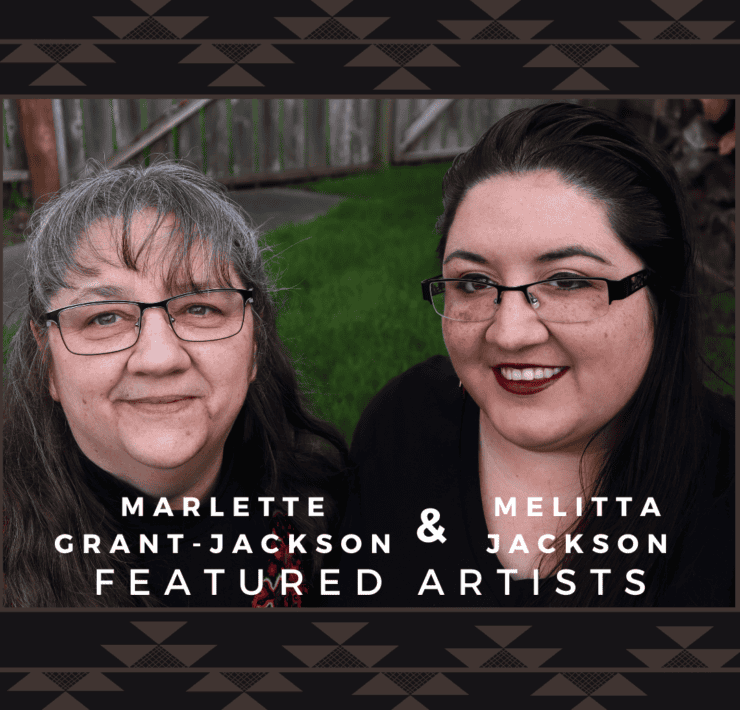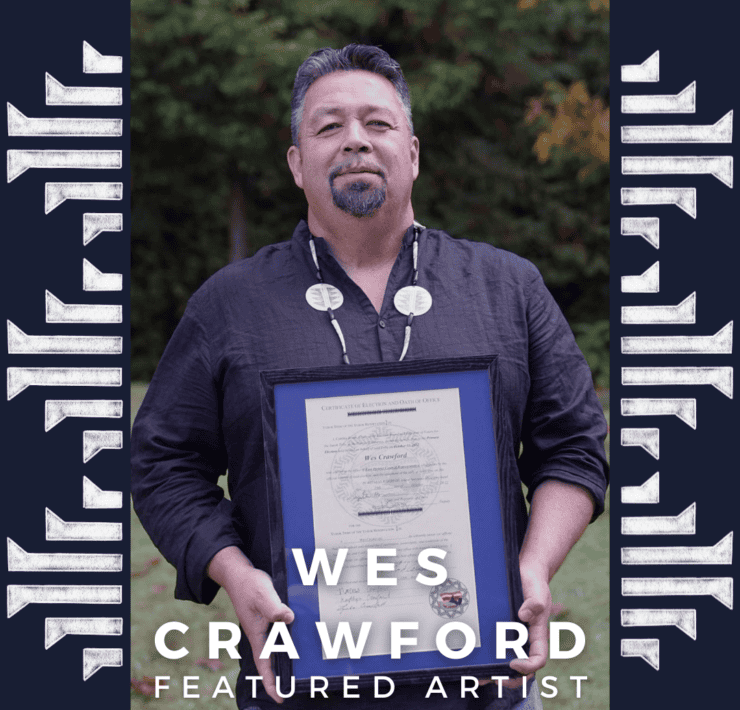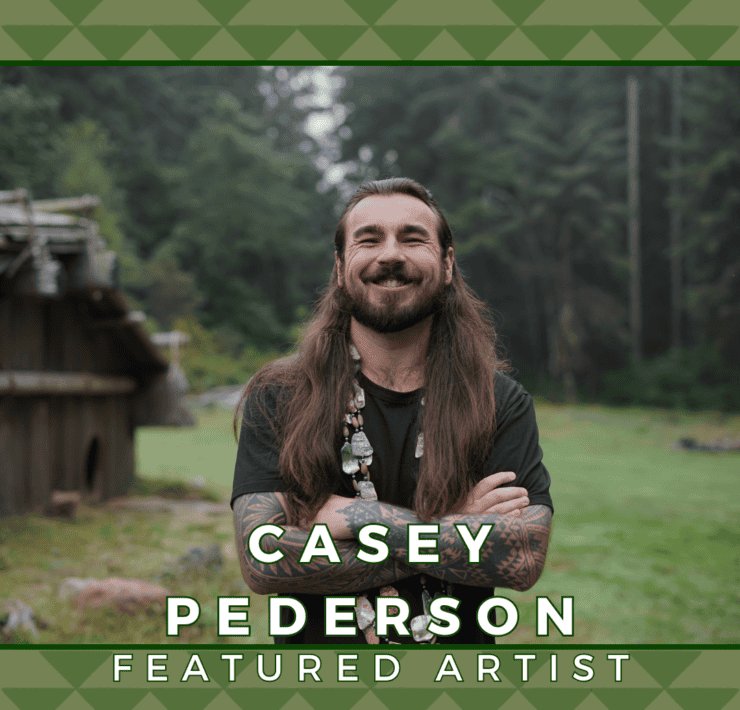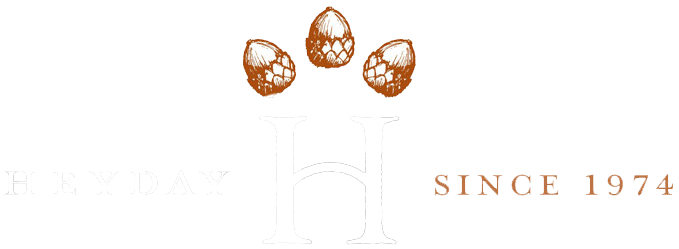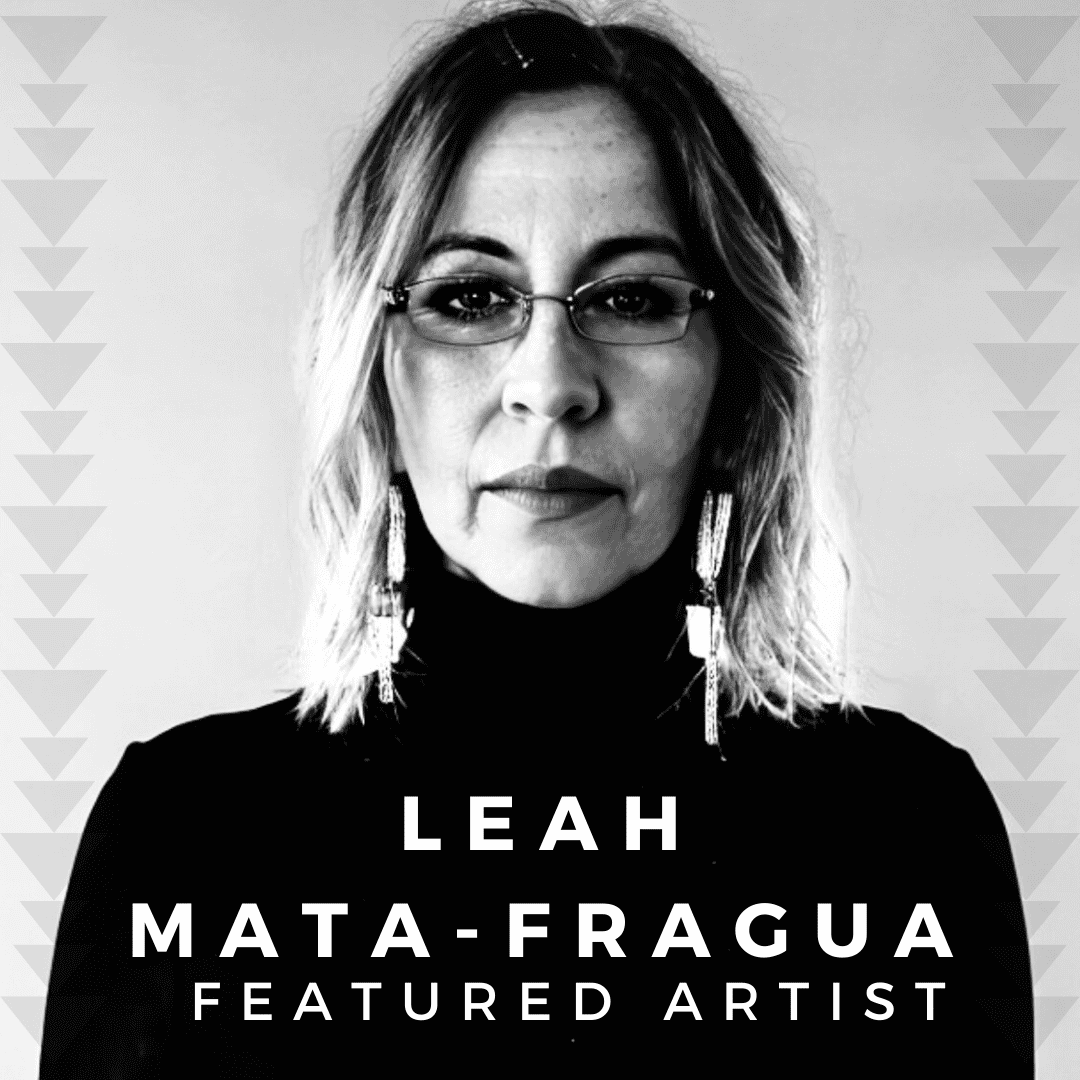
by Tavi Lorelle Carpenter
My introduction to Leah Mata-Fragua’s artistic talent occurred earlier this year at OxyArts’ “Iridescence of Knowing” exhibit showcasing Southern California Indigenous Artists. As one of the featured artists, her paper baskets stood out to me, as being a unique interpretation of what a basket could be. Viewers of the PBS documentary about photographer Cara Romero, will recognize Leah as one of Romero’s collaborators, creating the regalia pieces that Romero photographs. A member of the Yak Tityu Tityu Yak Tiłhini (Northern Chumash) tribe located in the Central California Coast, Leah occupies the space of California Native fine artists, working in what is typically called traditional arts.
Her art career began in 2008 in the wake of the Great Recession, considered to be the worst financial crisis since the Great Depression. She was a single mother of four children, she had lost her job and as a result her health benefits. It was a difficult time for many people, Leah was no exception, she had lost everything.
“Nobody was getting work. I wasn’t even sure I was going to get unemployment because that was in the mess. So I went to tribal TANF [with the Federated Indians of Graton Rancheria]. I was one of the first participants to do both education and art business and I ended up being able to complete my master’s with Graton as well, on the TANF program.”
Leah not only became a successful fine artist but additionally, teaches as an adjunct professor. As previously noted, Leah’s work is what the art world largely refers to as traditional arts, but this has never quite felt like an apt description of her work.
“People tend to use the word traditional arts but when you’re looking at material culture from 200 years versus like 500 years, it looks very different. Because humans, societies evolve, right? So I feel like the word “traditional” locks you into some sort of box, art that is specifically from a certain time period. And that is not how our people work, because I look at shell beads or necklaces from different time periods and they look different and their techniques are different, or sometimes they might have new trading partners. And so there’s a new material added into the mix. And so when people say traditional arts, I’m like, well from what? 100 years ago? 300 years ago? 500 years ago? Like what part of that tradition because we’re talking, you know, some of our oldest sites are over 10,000 years old.”
Recognizing culture as an ever-changing river rather than an immovable mountain, Leah realized that her art making was transcending temporal boundaries, finding itself rooted not in time, but place.
“I feel like my practice is rooted in place, whether that be materials or whether that be narratives or culturally significant ethos, stories that have meaning or morals to them that might be applicable to some of the protocols that are specific to my particular community. So I started using place-based because regardless of material or regardless of what time period I’m working from, going up and down the continuum in terms of technique, place-based allows me that freedom. It doesn’t lock you in. I can do contemporary work, I could be making regalia, I could be [making] a basket, it doesn’t matter-it’s still rooted in place.”
The term “place-based” has yet to catch on, but Leah is absolutely at the forefront of challenging the conventional art world’s conception of what a Native artist is, maintaining her authenticity in her creative expression. Another noteworthy dimension of Leah’s art is the way it engages with contemporary issues of climate change and the impact that has for place-based people.
“When I was younger, in my homeland, we could get clams and abalone. Then it was banned [up through the north] of the Golden Gate. I have a lot of Pomo friends, so they would gather for me or they would give me their shells when they were done with them. I would usually make stuff for them and they would pay me in shells. Which worked really well and it’s a very, pre-contact economic system. But now that there is a moratorium on abalone, rightfully so, although it’s not our fault, I knew that I would need to make a pivot.”
And it’s extended beyond just abalone, the intense fires have also impacted basketry grasses and pine nuts. In Leah’s words “It’s really hard out there!”
Despite these challenges, Leah has persevered in her artistry. She skillfully ties her creative process back into the realm of tradition, drawing inspiration from ancestors who navigated change based on the resources available to them.
“We had feather dance belts, and I was looking at pictures at the Smithsoian one time and I came across a dance belt that had white beads on it instead of feathers. So even our own [ancestors] were like, I’m going to use this, this is cool-we had culturally distinctive ways of incorporating new materials.”
For Leah, her resilience can be shown in her creative exploration of examining how we tell our stories about place.
“Recently, I’ve been looking at trying to find other ways to tell story about place, through my artistic practice with a more sustainable approach. My most recent body of work, I’ve taken basket scraps and I’ve turned them into paper and I made them into paper baskets.”
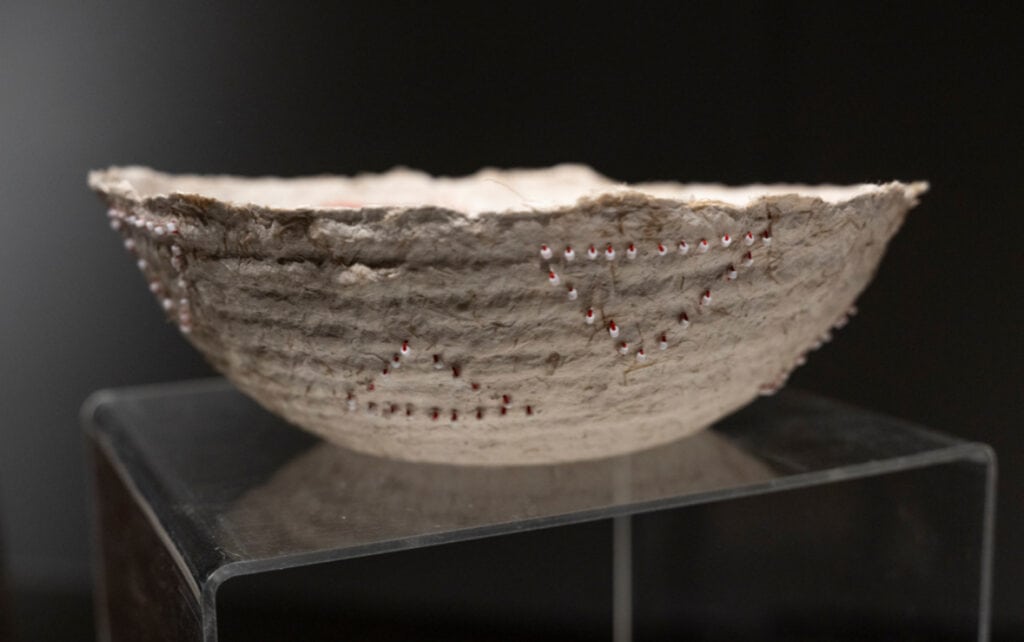
These baskets which were on display at the Oxy Arts exhibit incorporate the Chumash orthography as a contradiction to the past wherein Latin orthography was put into the baskets that were commissioned by the Spanish. The different conceptual explorations Leah is working with creates a multilayered art piece, examining materiality, sustainability and language revitalization.

She commenced that maybe some people won’t think of these new baskets as traditional but in 500 years? Who knows! Leah’s creations are telling a story that celebrates place while also bringing awareness to the challenges of sustainability in a changing climate.

Another important aspect of Leah’s work is the community component that runs central throughout her artmaking. Gathering, as she pointed out, is labor intensive and not something one can simply do on her own. But even beyond materials, Leah looks for ways of creating pieces that can act as community commentary.
For example, Leah shared a project she worked on for the exhibit “Reclaiming El Camino: Native Resistance in the Missions and Beyond”, which recently opened at the Autry Museum in Los Angeles December 9th.
“I took two very old church pews from a mission from the 1920s and I had California Indian people write their messages to the Catholic church. It’s called “Rematriation”. Then part of what I want to do is, because it’s made out of pine, I want to have it just rematriate back into the land where it came from and to take those traumatic stories with it.”
Leah confessed that working in community can be difficult because of the traumas people have endured. But she also noted it was the most important aspect of what she does.
Leah is a poignant reminder of how art can help us overcome formidable challenges by honoring what we know to confront the obstacles before us with unwavering determination and courage.
If you are in the Los Angeles area you can see Leah’s latest work at the Autry Museum.
Otherwise, give her a follow on Instagram and check out her website!

